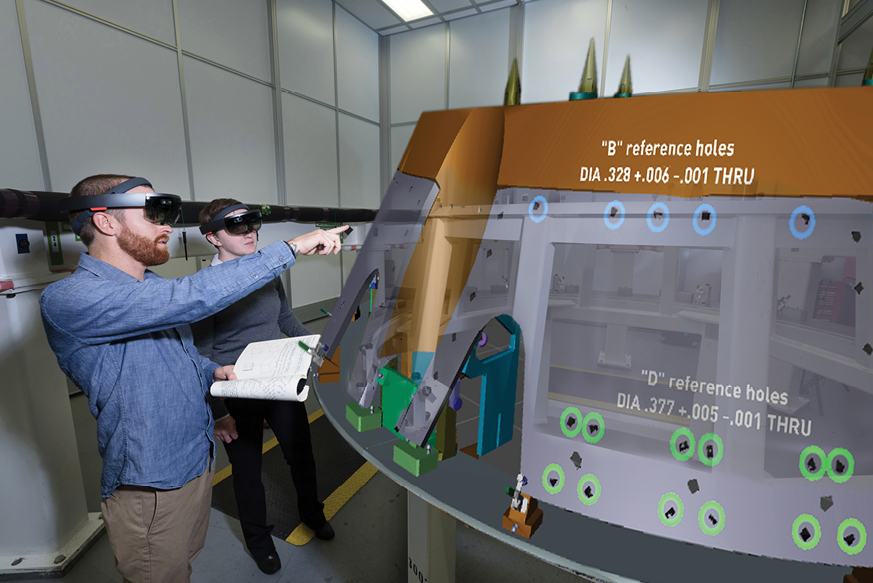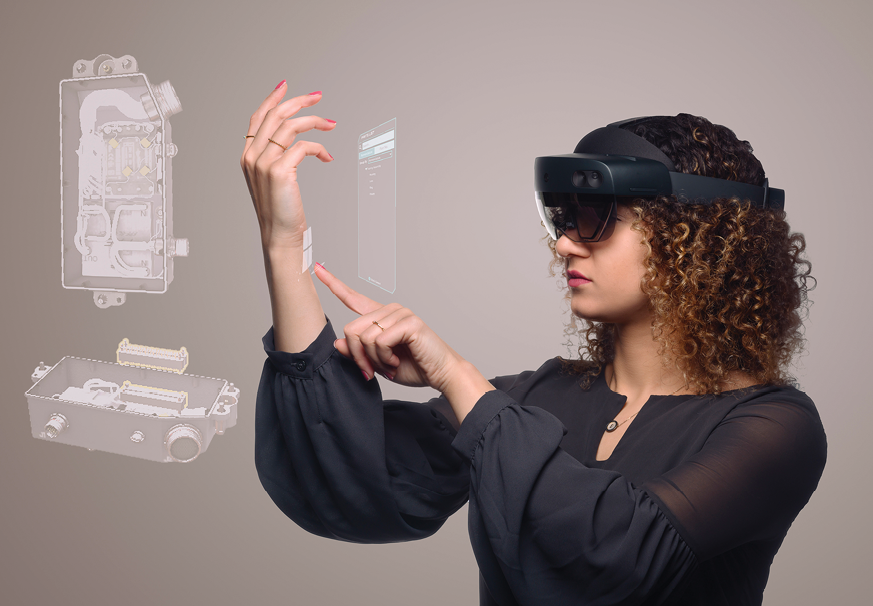- Home
- Media Kit
- Current Issue
- Past Issues
- Ad Specs-Submission
- Ad Print Settings
- Reprints (PDF)
- Photo Specifications (PDF)
- Contact Us
![]()
ONLINE
![]()
ONLINE

Mission-Driven Transformation
Editors’ Note
Yvonne Hodge is responsible for developing strategies and implementing integrated, cross-functional solutions that transform operations through technology, culture, and processes to deliver business-based outcomes. She leads the corporation’s Digital Transformation and Enterprise Information Technology teams, and the office of the Chief Data and Analytics Officer – comprising more than 5,200 professionals worldwide. During her 18 years with Lockheed Martin, Hodge has held several positions, including Vice President of Business Innovation, Transformation, and Enterprise Excellence for Space; Vice President of Information Technology for Space; Vice President of Technical Operations for Enterprise Business Services; CIO & Vice President for Electronic Systems; and Vice President of Mission Success & Information Technology for Maritime Systems and Sensors. Prior to joining Lockheed Martin, Hodge served many years at AT&T in various managerial and executive positions, including vice president of operations for business customers. Hodge holds a B.S. degree in mathematics, cum laude from Montclair State University. She has received a number of awards, including the 2012 Black Engineer of the Year Award, which is a special recognition for career achievement. She is a champion for science, technology, engineering and math (STEM) education.
Company Brief
Headquartered in Bethesda, Maryland, Lockheed Martin (lockheedmartin.com) is a global security and aerospace company that employs approximately 110,000 people worldwide and is principally engaged in the research, design, development, manufacture, integration and sustainment of advanced technology systems, products and services.

Lockheed Martin technicians use augmented reality
to train on an assembly for NASA’s Orion spacecraft.
AR can reduce the timeframe for complex assemblies
by as much as 80-90 percent.
Will you provide an overview of your role and key areas of focus at Lockheed Martin?
I have the privilege of leading Lockheed Martin’s mission-focused transformation strategy, which spans process, technology, workforce and culture efforts. Lockheed Martin serves military and space customers worldwide, and their missions and challenges are changing dramatically as global security grows more complex. We’ve always been a company that leads through change to support our customers, and now is no different. We’re taking bold, decisive steps to transform our business for the future.
My organization includes our internal information technology group, data analytics team, digital transformation program office and business transformation and systems modernization team. In addition, I chair a cross-company, cross-functional group of leaders who are ensuring our transformation efforts are fully integrated.
What is the mission of Enterprise Business Transformation at Lockheed Martin and will you discuss these efforts?
Across our business, we’re transforming to deliver the speed, agility and insights our military customers need to stay ahead of rapidly-evolving threats around the world. Through new innovations and partnerships with commercial industry, we’re accelerating 21st Century Warfighting capabilities to support national security missions. The same holds true for space exploration and scientific discovery missions, where we’re creating technologies that power new and exciting breakthroughs in orbit and beyond. We’re embracing disruptive innovation in our processes, technology and tools to drive faster deliveries, agile responsiveness, and data-driven insights for our customers.
We’re focused in five areas: digital and model-based engineering; next-generation DevSecOps software; digital enablement through AI, 5G and cyber; data as a strategic asset; and advanced production and manufacturing.
What are the keys to driving transformation at a company as large and complex as Lockheed Martin?
We always start with the customer. Transformation has to focus on a clear value proposition for our customers and their missions. Our strategy is built to maximize mission impact for defense, security and exploration goals.
Another key is people. We need to help our workforce transform with digital re-skilling and development, with systems that empower them to innovate and move fast, and with a workplace environment that provides flexibility, collaboration and agility, particularly during COVID-19. One thing the pandemic has further emphasized is the importance of taking care of people, keeping them safe and building strong relationships across virtual teams.
Process is also critical. If we want to move dramatically faster, we need to do more than streamline processes – we need to reinvent the way we work. We’re looking across the board at transforming our approaches to work with a focus on empowerment and agility, and building technology solutions that create an integrated digital foundation for those new processes.
The last key I would identify is culture. People and process will ignite change, but culture is what turns transformation into a continuous and renewable resource. Our culture of innovation is very strong at Lockheed Martin, and that culture is evolving to embrace and advance transformation and continuous learning.
“Transformation has to focus on a clear value proposition for our customers and their missions.
Our strategy is built to maximize mission impact for defense, security and exploration goals.”
How do you define the Lockheed Martin culture and how critical is culture to the strength and leadership of the company?
Lockheed Martin’s culture is built on a commitment to ethics and integrity. That’s really important to me and to all of our employees. We live and breathe those values every day. We’re also very mission- and customer-focused, which I love about this company. When you join Lockheed Martin, you do so because you care about the customers we serve and you believe in the purpose we pursue – from global security to scientific discovery. That mission focus drives exceptional performance, innovation and technical excellence.
We want to build on those strengths. Our customers’ needs are changing, and we need to change with them. Performance remains paramount, but speed and agility are increasingly critical. Militaries are counting on us to help connect the dots between systems, networks and platforms to enable multi-domain operations that span land, air, sea, space and cyberspace. We are focused on working together across Lockheed Martin to help lead that revolution, and encouraging that kind of collaboration at all levels of the company.

A Lockheed Martin engineer demonstrates advanced design tools
enabled by digital engineering. New design and visualization
tools help engineers optimize complex components and systems
so they are simple and cost-effective to manufacture
in the factory and maintain in the field.
Will you discuss Lockheed Martin’s investment in technology and the role that technology is playing in transforming the business?
As you can imagine, technology investment is central to supporting customer missions and our own transformation. I’ll give you two examples that are yielding results.
One is in software. We’re revolutionizing the way we develop and deliver code, adopting all new tools and new processes in an approach called DevSecOps, which combines development, security and operations teams into a continuous thread. We implemented a company-wide, cloud-enabled Software Factory to accelerate and improve software development. It’s already accelerated processes that used to take weeks or months to days or even hours.
Another is digital engineering, and in particular digital twin technology. Digital twins create detailed, data-driven models of physical systems, which enable powerful modeling, simulation and analytics. We applied digital twin visualization technology on NASA’s OSIRIS-REx mission, which just recently captured America’s first-ever asteroid sample in deep space. To prepare for a never-before-attempted mission like that, engineers used digital twin to visualize and analyze the sample capture event, so they could plan it out with pinpoint precision.
You have spent nearly twenty years with Lockheed Martin. What has made the company so special for you?
The culture here is really special. We have strong ethical standards and a commitment to integrity. The workforce is really dedicated to our customers and their missions. It’s a privilege to work with some phenomenal people who bring incredible expertise and creativity to the table. Our leadership team also brings the kind of vision, commitment and focus we need to be successful. Our president and CEO, Jim Taiclet, is continuing a strong tradition of innovative and visionary senior leadership. It’s inspiring to work in that kind of an environment every day.
What advice do you offer to young people interested in a career in the aerospace and defense industry?
On the technology side, I’d recommend young people focus on the areas that are shaping the future. Data, artificial intelligence, software, 5G networking, and cloud are all growing in importance, so make sure your skills are aligned to where the industry is headed. The same holds true on the leadership side. Diversity, inclusion, teamwork and communication are all vital to the future. It’s also important to embrace agility and know how to move fast without sacrificing quality. Speed is a mindset, and a vital one in this industry. Leadership skills are just like technical skills – they need to be honed, practiced and refreshed throughout your career.
Finally, and perhaps most importantly, have a passion for what you’re doing. You’ll have good days and bad, and passion is the key ingredient that makes the bad days manageable and the good days even better. Passion is also contagious. If you’re passionate about the mission and your purpose, people around you will be, too. That’s one of the great things about aerospace – it’s easy to be passionate about the work we’re doing.![]()